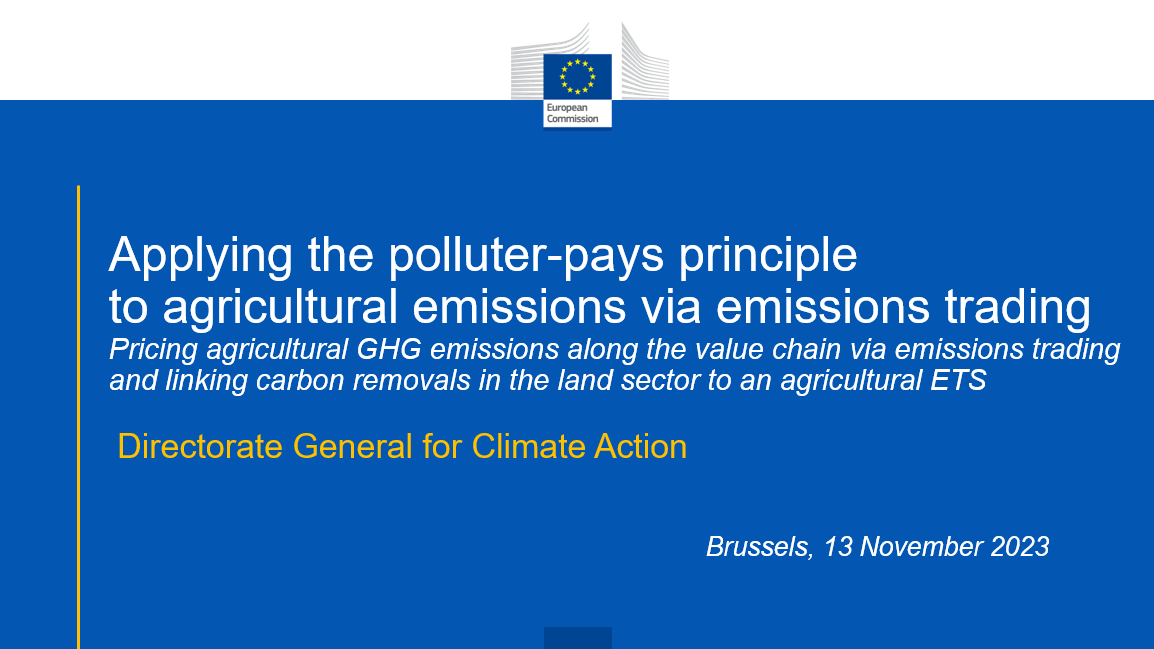
© European Commission and Ecologic institute
Applying the Polluter-pays Principle to Agricultural Emissions via Emissions Trading
- Presentation
- Date
-
- Location
- online and Brussels, Belgium
- Speech
-
Julia Bognar (IEEP)
On 13 November 2023, Hugh McDonald and Julia Bognar (IEEP) presented the recently published report "Pricing Agricultural Emissions and Rewarding Climate Action in the Agri-food Value Chain" to the Directorate-General for Agriculture and Rural Development's Civil Dialogue Group on Environment and Climate Change. The report, written by Ecologic Institute, IEEP, and Trinomics investigate how an emissions trading system (ETS) could price greenhouse gas emissions from agricultural activities, and how this can be accompanied by providing farmers and other landowners with financial incentives to carry out land-based carbon removals.
Ecologic Institute led the second part of the study with the following key content:
- Potential demand for LULUCF carbon removals: summary of the AgETS options that removals could be linked to,
- Potential supply of LULUCF carbon removals: options and challenges for carbon farming deployment in the EU,
- Cross-cutting design aspects of an AgETS+Removals policy,
- Carbon removal policy models for linking to an AgETS: description and assessment and
- Conclusions and questions for further research.
Hugh McDonald outlined the resulting conclusions:
- LULUCF carbon removals will be essential to attain the EU’s climate objectives – but cannot replace rapid emissions reductions in all sectors.
- The nature of LULUCF removals poses challenges to their incorporation into an AgETS, especially related to non-equivalence of LULUCF removals and AgETS emissions reductions and emissions reduction deterrence.
- Policy design, including the CRCF, may be able to address some of these challenges.
- The different removal policy models explored in this study pose different strengths and weaknesses, and there is not a single best solution.
- Different removals types could and should be governed by different policy models.
- Sequencing of policy models over time should also be considered.
- AgETS+Removal policy design should be considered as part of a wider systemic change to best transition the agriculture and land sector and our food system to sustainability.




